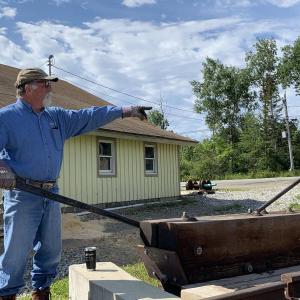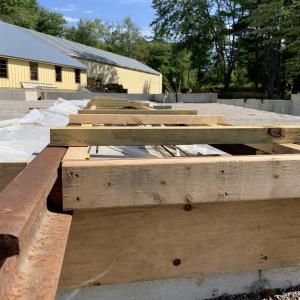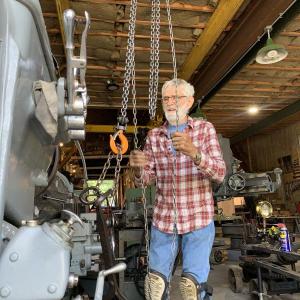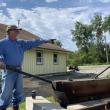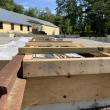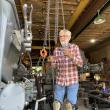Burned in Wiscasset, being rebuilt in Alna
 Museum President David Buczkowski discusses how trains will enter the engine house’s bays. SUSAN JOHNS/Wiscasset Newspaper
Museum President David Buczkowski discusses how trains will enter the engine house’s bays. SUSAN JOHNS/Wiscasset Newspaper
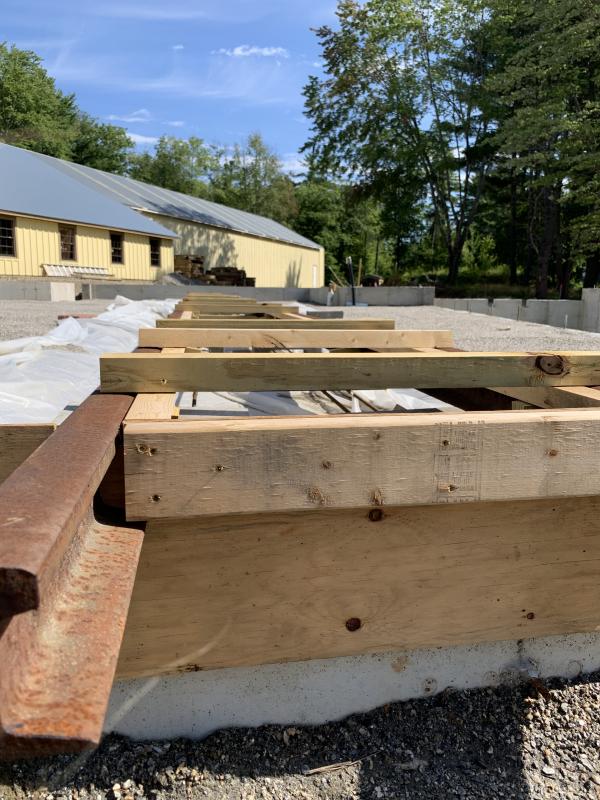 SUSAN JOHNS/Wiscasset Newspaper
SUSAN JOHNS/Wiscasset Newspaper
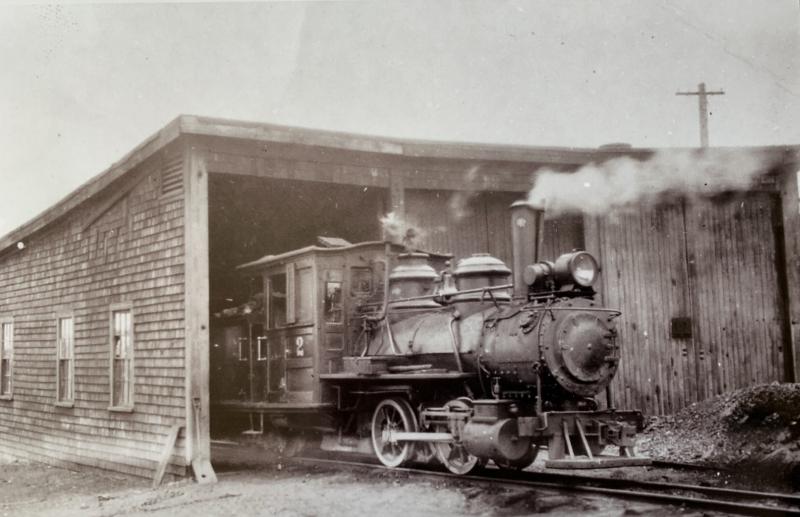 Wiscasset, Waterville & Farmington Railway’s 1894 engine house was beside the Sheepscot River in Wiscasset. Courtesy of Wiscasset, Waterville & Farmington Railway Museum
Wiscasset, Waterville & Farmington Railway’s 1894 engine house was beside the Sheepscot River in Wiscasset. Courtesy of Wiscasset, Waterville & Farmington Railway Museum
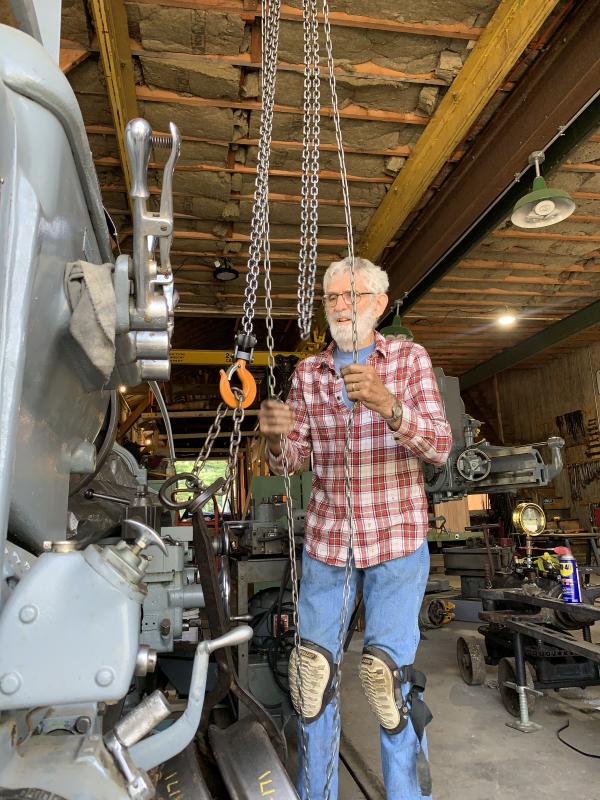 Jerry Steinke cleans wheels July 31. SUSAN JOHNS/Wiscasset Newspaper
Jerry Steinke cleans wheels July 31. SUSAN JOHNS/Wiscasset Newspaper
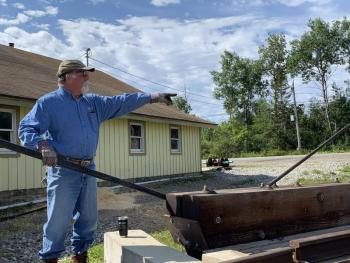 Museum President David Buczkowski discusses how trains will enter the engine house’s bays. SUSAN JOHNS/Wiscasset Newspaper
Museum President David Buczkowski discusses how trains will enter the engine house’s bays. SUSAN JOHNS/Wiscasset Newspaper
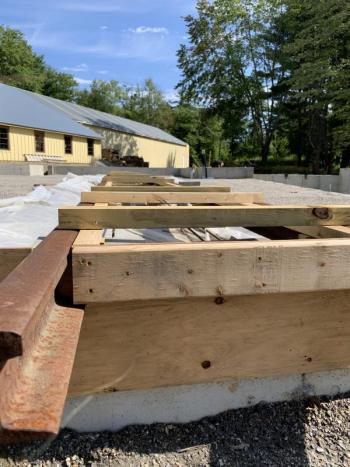 SUSAN JOHNS/Wiscasset Newspaper
SUSAN JOHNS/Wiscasset Newspaper
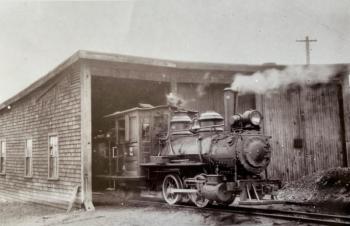 Wiscasset, Waterville & Farmington Railway’s 1894 engine house was beside the Sheepscot River in Wiscasset. Courtesy of Wiscasset, Waterville & Farmington Railway Museum
Wiscasset, Waterville & Farmington Railway’s 1894 engine house was beside the Sheepscot River in Wiscasset. Courtesy of Wiscasset, Waterville & Farmington Railway Museum
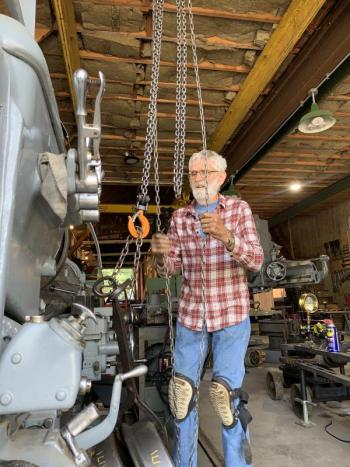 Jerry Steinke cleans wheels July 31. SUSAN JOHNS/Wiscasset Newspaper
Jerry Steinke cleans wheels July 31. SUSAN JOHNS/Wiscasset Newspaper
“Gee, it’s starting to look like a real railroad yard,” Jerry Steinke said at Wiscasset, Waterville & Farmington Railway Museum. Wiscasset Newspaper was asking the Durham man’s and other members’ thoughts July 31 on one of the nonprofit’s projects: The Cross Road, Alna museum is building an engine house like the Wiscasset one that burned 90 years ago.
The new building continues the museum’s pattern of modeling things after ones that were elsewhere on the railroad, like building a water tower that was a replica to the Weeks Mills one, fellow member Ron Ginger of Boothbay said. “Anything we do, we want to have a precedent that it was on the railroad somewhere.”
About five feet longer than the Wiscasset engine house, the new one will be about 2,400 square feet, should be ready for engines this winter and, thanks to lots of old pictures, look like the one that stood behind what is now Wiscasset Elementary School, project manager Brendan Barry said. A turntable’s concrete ring remains near the ballfield, he said.
The Merrimack, New Hampshire truck driver who had model trains as a child, then started coming to the museum around 2003, said engines were parked, but not worked on, in the Wiscasset building. This one will have room to work on the engines, and they can be fired up in it. “Right now, when we want to use an engine we have to pull it out of the shop building and fire it up outside. And then, when we put it away for the night, we have to dump the fire out of it and put (the engine) in the shop cold.”
What does the project mean to him? ‘”It’s a chance to replay a piece of Maine history.”
According to museum spokesman Stephen Piwowarski, the Wiscasset engine house was built in 1894, expanded to accommodate larger engines in 1907 and burned down in 1931. WW&F Railway closed two years later, he said.
Jeff Verney excavated the spot for the new engine house, Piwowarski said. Verney’s brother and fellow Alna resident Jay Verney cut logs at their late father Richard Verney’s mill, and Richard Spinney of Edgecomb poured the foundation, Piwowarski said.
Paul Crandall said he helped arrange for trees from his son and daughter-in-law Todd and Ali Crandall’s Head Tide Hill Road wood lot to be used for the logs. Todd Crandall said he liked giving back, and it was nice to think the trees would be helping the museum show history.
Museum President David Buczkowski unlocked a turntable to show how it will line up an engine to enter any of the building’s three bays. Each bay will have a smoke jack, or chimney, “so the smoke will go right through the roof,” he said.
Sharing photos of the Wiscasset engine house, the museum’s archivist, Linda Zollers, said the Alna one will add to the museum’s magic. “This place is awesome!” And she looks forward to another project she said is on the list, an archives building. “I’m not dying until I see it.”
Event Date
Address
United States

